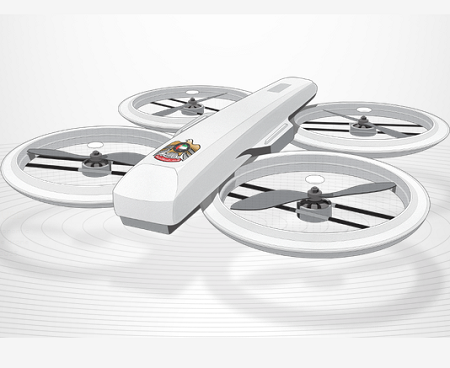Intel, AT&T Agree To Test LTE-Connected DronesIntel, AT&T Agree To Test LTE-Connected Drones
Drones connected to LTE will be able to fly farther and more securely, opening new business use-cases. Intel and AT&T are working together to make this happen.


6 Drones Designed To Do Good
6 Drones Designed To Do Good (Click image for larger view and slideshow.)
Intel and AT&T are working together to test how drones -- or, unmanned aerial vehicles (UAVs) -- can work on high-speed networks. If it work, the partnership could help evolve how people and businesses interact with the growing field of the Internet of Things.
"If 4G connectivity was about us, 5G is about a balance between us and the machines," Intel CEO Brian Krzanich said Feb. 22, during a panel discussion at the Mobile World Congress trade show in Barcelona.
Currently, drones run on short-range technologies like WiFi, Bluetooth, and radio waves. Connecting them to 4G, and inevitably and ideally 5G networks, will enable them to fly higher and farther from their base, open up new business use-cases, and address security and safety concerns, such as creating interference with aircraft.
"Intel believes UAVs have great potential, from inspections and precision agriculture to deliveries of consumer goods and providing emergency disaster relief," Anil Nanduri, vice president of the Intel New Technology Group, said in a Feb. 22 statement. "We want to grow this market through our collaborations and by integrating new technologies and compute to UAVs."
AT&T senior vice president of IoT Solutions, Chris Penrose, added construction and insurance to the long list of industries that could be impacted (military use also comes to mind), explaining that an LTE-connected drone could transfer "important information, images, and video quickly and efficiently."
At MWC, Intel plans to again show off the Yuneec Typhoon H, a hexacopter that Krzanich demonstrated at the Consumer Electronics Show in January, sending it through a maze and down an obstacle course to show off its use of an Intel RealSense module to self-navigate and avoid collisions.
"We're truly excited about drones for many reasons and see endless uses in sports and beyond that will capitalize on this technology," Krzanich said at CES, after announcing that the hexacopter will be available during the first quarter of this year for less than $2,000. (It has since been confirmed for $1,800.)
[Check out these eight drones taking flight.]
Intel and AT&T both understand that the next wave of advanced technologies, and revenue, will be in powering and connecting far more than just the traditional mobile devices, and each is investing heavily in the IoT -- a global market that IDC expects will triple by 2020, to $1.7 trillion.
AT&T currently has more than 25 million devices connected to its network. During the third quarter of 2015 alone, it added a record 1.6 million connected devices, it shared in a recent Insights Report.
Far from the only drone news at MWC, Facebook founder and CEO Mark Zuckerberg announced during his keynote that he plans to use drones and laser beams to deliver Internet access to regions still without an Internet connection.
Rising stars wanted. Are you an IT professional under age 30 who's making a major contribution to the field? Do you know someone who fits that description? Submit your entry now for information's Pearl Award. Full details and a submission form can be found here.
About the Author
You May Also Like






